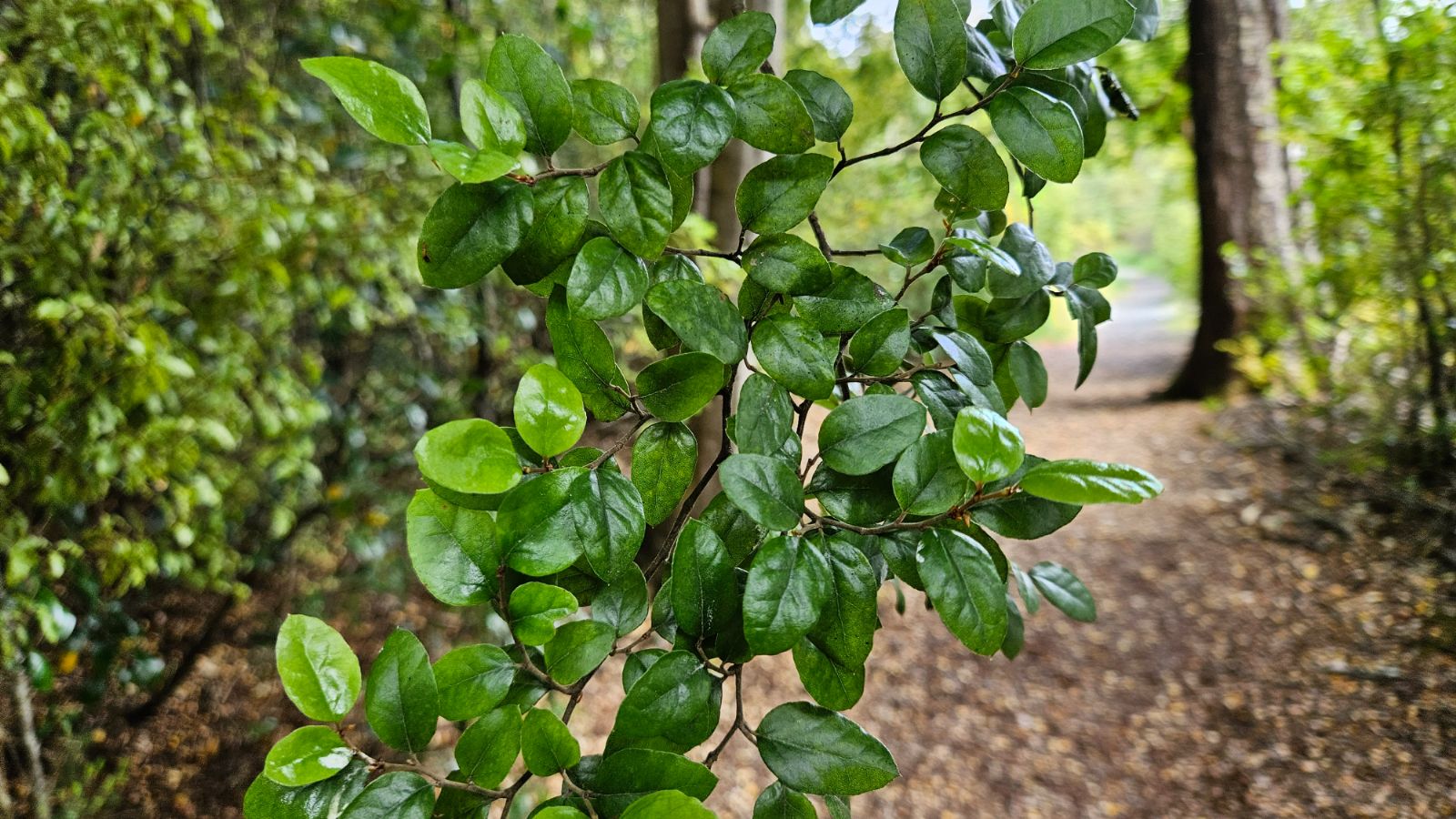Nothofagus × blairii
Sponsor
Kindly sponsored by
Col. Giles Crisp
Credits
Owen Johnson (2020)
Recommended citation
'Nothofagus × blairii' from the website Trees and Shrubs Online (treesandshrubsonline.
Genus
- Nothofagus
- N. fusca × N. cliffortioides
Synonyms
- Fagus × blairii Kirk
- Fuscospora × blairii (Kirk) Heenan & Smissen
- Nothofagus × apiculata nv. blairii (Kirk) Govaerts
Other taxa in genus
- Nothofagus alessandrii
- Nothofagus alpina
- Nothofagus antarctica
- Nothofagus betuloides
- Nothofagus cliffortioides
- Nothofagus cunninghamii
- Nothofagus × dodecaphleps
- Nothofagus dombeyi
- Nothofagus fusca
- Nothofagus glauca
- Nothofagus gunnii
- Nothofagus × leonii
- Nothofagus macrocarpa
- Nothofagus menziesii
- Nothofagus menziesii × obliqua
- Nothofagus moorei
- Nothofagus nitida
- Nothofagus obliqua
- Nothofagus pumilio
- Nothofagus solandri
- Nothofagus truncata
A tree potentially to 30 m tall and intermediate in features between its parents. Bark dark brown, developing predominantly vertical ridges and fissures. Shoot slender (c. 1 mm thick), dark reddish, pubescent. Buds conic, reddish, c. 4 mm long. Leaves evergreen, dark green, broadly ovate, c. 20 × 13 mm, entire or toothed, the teeth distant and step-like or sometimes more regular and triangular; petioles c. 5 mm, pubescent (Poole 1951).
Distribution New Zealand Forming hybrid swarms when the parents grow together.
Habitat Mountain forests
USDA Hardiness Zone 8
RHS Hardiness Rating H5
Conservation status Not evaluated (NE)
The name Nothofagus × blairii can be used to cover part of the swarm of hybrids which have been identified from the New Zealand forests where ‘red’ beeches (i.e. N. fusca and N. truncata) grow alongside the ‘black’ beeches (i.e. N. solandri and N. cliffortioides); N. × blairii is assumed to have originated from crosses between N. fusca and N. cliffortioides, and will be found a little below the tree-line where the high-altitude N. cliffortioides mingles with the lower-altitude but very widespread N. fusca. The names N. × apiculata and N. × dubia have also been published to cover hybrids of the lower-altitude N. solandri with N. truncata and N. fusca respectively; no name has been published for hybrids of N. truncata and N. cliffortioides.
These hybrids tend to be fertile, and show a range of foliage features intermediate between their parents (Poole 1951); the foliage may also differ between crown branches and epicormic sprouts on the same tree (Wardle 1984). As such, differentiating the hybrid taxa is a matter of determining which likely parents grow nearby. Recent genetic research by R. D. Smissen and others (Smissen et al. 2014) has suggested that the small proportion of wild trees which cannot readily be attributed to any one of the four parent species in the subgenus Fuscospora may show genes characteristic of these parents in almost any possible combination, reminding us that botany’s traditional binomial names become very approximate tools when expected to describe complex and fluid populations of this sort.
Nothofagus × blairii, however, remains perhaps the best name to use for the very few trees grown in our area whose physical features suggest some degree of hybridisation. At Ardanaiseig among the remote mountains of Argyll in western Scotland, a handsome tree of 21 m × 67 cm dbh survived in 2012, from two examples within a grove of New Zealand Nothofagus planted by Thomas Ainsworth in the years after 1932 (Ardaniseig Hotel 2020); they were first recorded as this hybrid by Alan Mitchell in 1976 (Tree Register 2020) and the surviving tree’s foliage closely matches a herbarium specimen attributed to wild N. × blairii in the Museum of New Zealand, with its neatly oval and obscurely toothed leaves. The Ardanaiseig tree grows next to examples of both the putative parents but it is not clear if the sapling was suspected to be of hybrid origin when planted; given its size and evident age it seems very unlikely to have self-seeded in situ, and it also seems to antedate most of the field research conducted by New Zealand botanists (Poole 1951) which has since helped to define and name this hybrid. A smaller specimen recorded as N. × blairii by Mitchell in 1991 somewhere on the Inveraray estate, also in Argyll, has not been relocated (Tree Register 2020); its origins could well have been the same. A tree within a grove of Nothofagus growing further north at Inverewe, either planted or subsequently identified (not by Mitchell) as N. × blairii and 14 m tall in 2013, closely resembles N. solandri (Tree Register 2020), but could possibly represent some part of this hybrid swarm.
As a naturally occurring hybrid between two groups of trees with significantly different leaf-shapes, and on the evidence at least of the Ardanaiseig specimen, N. × blairii is a more distinctively handsome plant than hybrid taxa tend to be and it perhaps deserves to be cultivated a little more widely. Like its parents it, and its fellow hybrids, should grow happily across most of the UK and Ireland, especially in western areas, and perhaps in the Pacific North West of North America.

